
ESS is Now Available at Higher Level (HL)
After being a standard level subject choice since 2017, taken by 19,991 candidates in May 2023, ESS will now be offered at higher level (HL). This remains an interdisciplinary subject available either as a Group 3, Individuals and Societies, or Group 4, Sciences. This HL option allows real-life contexts to be effectively explored using the additional time and detail. The world is facing climate change, shifting weather patterns, geo-political conflicts, acute crises of resources, the age of artificial intelligence (AI), and many more challenges. Education must prepare young minds to take on these challenges and opportunities. The new opportunity of HL will enforce a pedagogy that is sustainability and solution-centred and provide opportunities for students to develop the much-needed systems thinking. In ESS, students examine diverse examples of local and global significance to gain a deeper, more meaningful understanding of the situations. This would also work with perspectives, people (societies), and economics as real-life lenses under which to examine situations, providing an authentic way for students to learn. Unpacking the abstract idea of ‘systems’ with students also allows them to naturally look for patterns, connections, and the surrounding issues. When students look at the actions of various stakeholders involved in a ‘system’, the actions can sometimes be counteractive or produce marked change, and they learn from those actions. These actions could be a result of different perspectives (personal and shared experiences). Introducing examples with varied perspectives that challenge functioning systems will be an important teaching technique. A welcome change in the new ESS guide is the introduction of guiding questions. The IB pedagogical method has a very strong affinity towards inquiry. The process of asking and forming questions is a particularly fun way to learn. Let us attempt to develop similar curiosity in the minds of students. Students ask one very central question in the learning process – "What's in it for me?" or "Why am I doing this?" These questions are very relevant to an educator so let’s encourage students to use the same inquiry into ‘questions that matter.’ The guiding questions can be utilised either as class openers or as teaching questions to bring meaningful challenges to the classroom.DOWNLOAD DP ENVIRONMENTAL SYSTEMS & SOCIETIES (ESS) SYLLABUS MAP
Highlights of the ESS New Guide, First Teaching 2024, First Assessment 2026
Engagement The new guide requires students to critically engage with environmental topics and explore them holistically. The course urges students to engage with various stakeholder perspectives when learning about local or global issues and wants students to develop their own informed perspectives. When students engage in learning about various perspectives and worldviews, they will hopefully learn to appreciate the tensions and dilemmas that each socio-geopolitical-environmental issue presents. The complex nature of some of these issues can also engage students’ emotions to help them seek a more authentic and nuanced understanding of the world around them. Students should be engaged in interdisciplinary thinking by using various local or global case studies to develop skills of great significance. Teaching this new course will require careful deliberation and planning from the start to achieve maximum outcomes for the students both within and beyond the course. Learn more about this in our upcoming webinar.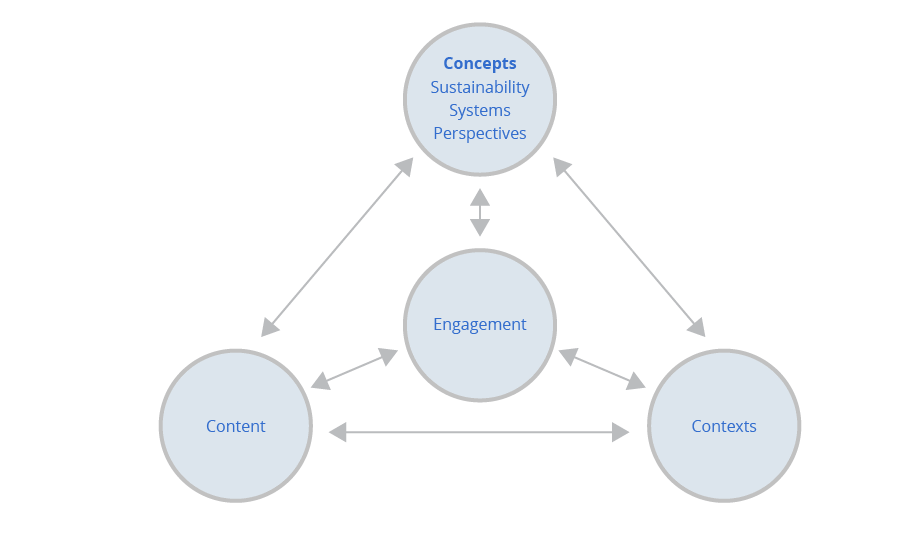
Source: Environmental Systems and Societies relationships (concepts–contexts–content) inspire students to engage with environmental issues. (ESS Guide, p.16).
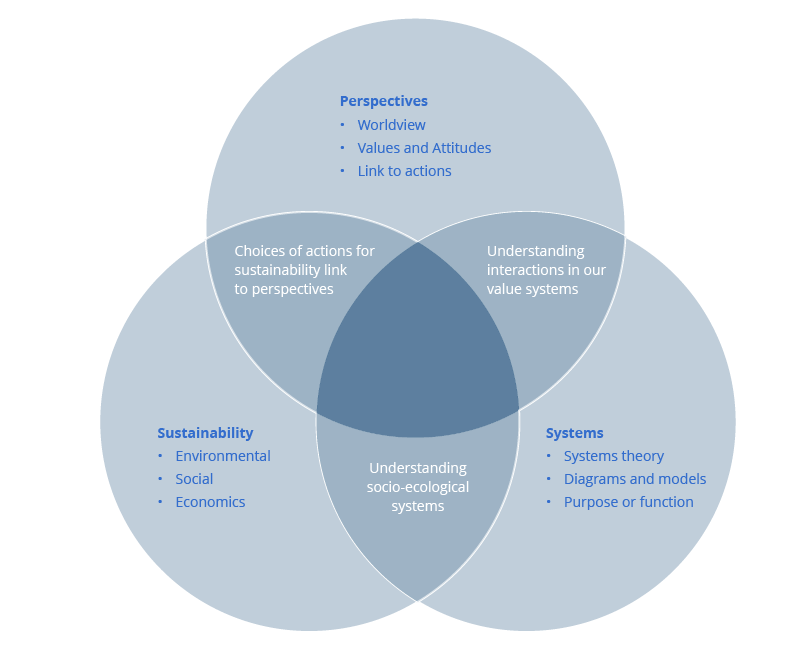
Source: Interactions between the three key concepts. ESS Guide TSM.
Syllabus Overview and Possibilities with Time Available
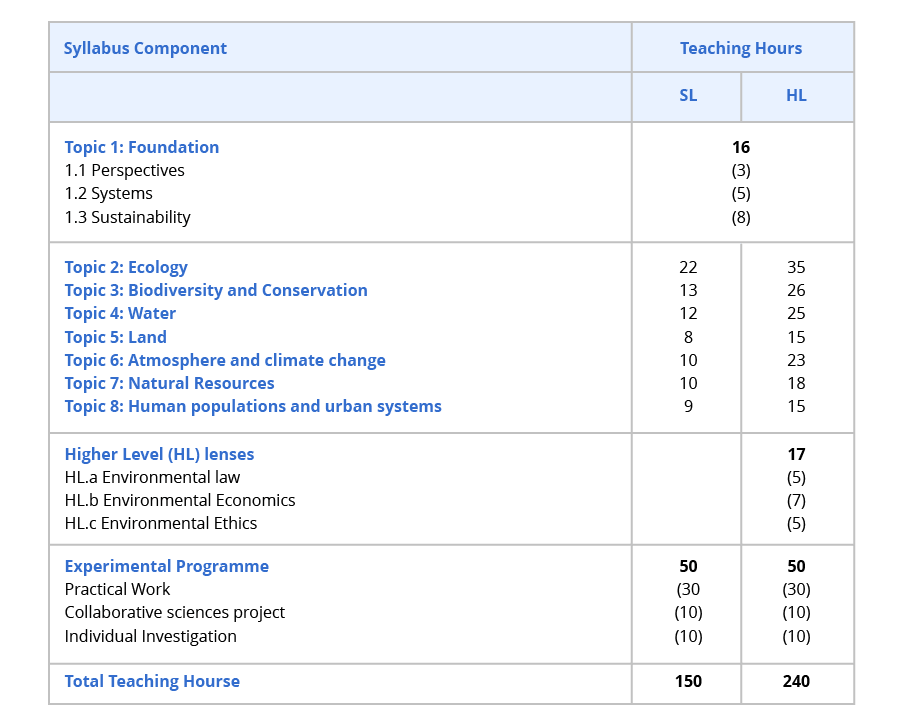
Source: ESS Guide, p.22.
Teaching HL Course
The new ESS course, including the HL topics, adds a deeper value to understanding the depth and breadth of the sustainability challenges that the world faces. It also forces students and educators to think differently and look at world environmental problems with great subjectivity and nuance. Students need to understand that solutions to environmental problems are both complex and challenging to implement. Some societies could adapt easily to these whilst others may not. The examples suggested in the course are very relevant, yet teachers are encouraged to also look for local examples that may arouse student interest to work with the problem more intuitively. If both SL and HL students are timetabled together it allows greater student numbers that promotes collaborative working on case studies and encourages a cooperative learning environment.Practical Scheme of Work (PSOW)
If, as an ESS teacher, you have a well-established PSOW for the previous course, then you may continue to use this in the future. There are, however, enhanced opportunities for surveys and secondary databases through the HL lens that offer a wider opportunity for students inclined to a social sciences approach. Citizen sciences and data collection are becoming increasingly important methods in ecology and diversity mapping, and students can be exposed to citizen science databases to allow them to develop investigations. Since 30 hours are available to develop the skills to succeed in ESS, it is highly recommended that teachers plan science-based lab experiences, EVS surveys, secondary database labs, and a class cohort-based survey. These experiences can have a variety of foci; options include a standalone design experiment, data processing and presentation or a lab for learning about evaluation.Involvement with Collaborative Science Projects (CSP)
With the inclusive and purposeful nature of the new CSP guide, the CSP can now use a variety of approaches. My preferred approach is a long-term school engagement with a focus on sustainability and the environment, which builds to fulfil CAS requirements. The CSP can be a one- or two-day intensive exercise allowing ESS students to collaborate with other scientists to share learning and skills. The CSP also has the potential to impact the school’s long-term sustainability plan. Both the new ESS and CSP guides reflect the progressive strides that the IB is taking and the IB’s encouragement of schools to consider sustainability.Assessment Overview
Standard Level
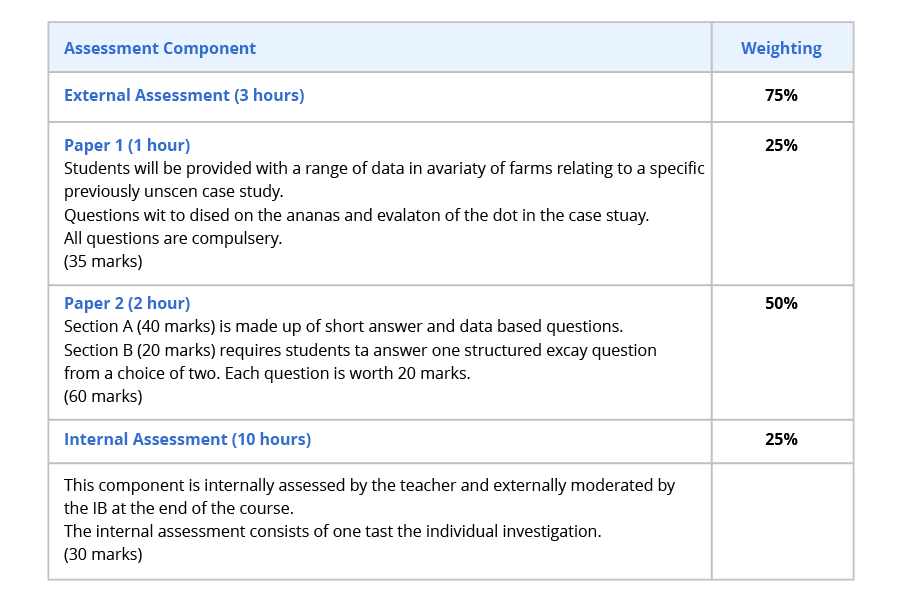
Source: ESS SL. (ESS Guide 2026, p.110)
Higher Level
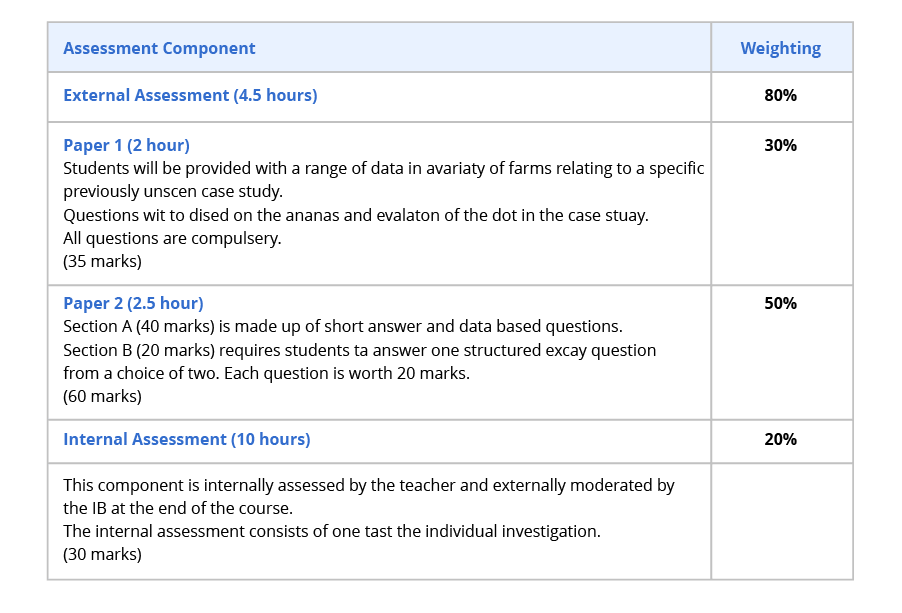
Source: ESS HL (ESS Guide 2026, p.111)
Internal Assessment Criteria
Both SL & HL will use the same IA criteria with 30 raw marks available, however, the SL course has 25% weighting whereas the IA has a 20% weighting in the HL course.
Source: ESS Guide 2026, p.120.
Further Support
The IB has already released the subject guide on the IB Programme Resource Center (PRC) and has released the teacher support material (TSM) page. The first round of IB workshops for the new ESS course will start from April onwards. Don't miss out on the ManageBac webinar covering the basics of unpacking the new ESS course.
Exploring the New Environmental Systems and Societies Guide in DP
Register NowAbout The Author

Sumit is an IB Educator who leads workshops for MYP, ESS, Biology, TOK, and ATLs. He is an experienced IB coordinator who holds two Master’s degrees - an MSc in Biotechnology and an MSc in Sustainable Development. He has extensive experience in DP assessment as a marker and examination team leader for the DP ESS. He is passionate about developing and implementing concept-based curricula and instructions. He strongly advocates the importance of interdisciplinary teaching and learning to help students acquire authentic learning experiences that they can apply in the real-world context. He is the ESS Subject Leader for ManageBac.
The Learning Management Digest
Subscribe today to receive our latest resources, events, updates and so much more – specially curated for you, and delivered straight to your inbox.
